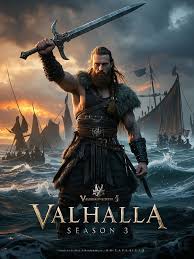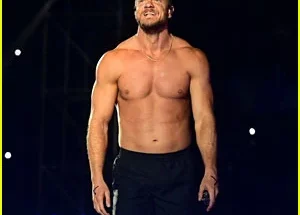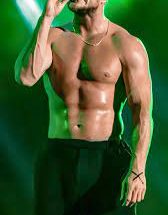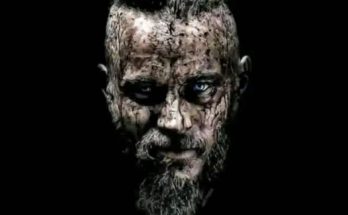The iconic world of the Vikings saga is returning in full force as Netflix unveils its epic trailer that promises a sweeping tribute to the legacy of Ragnar Lothbrok and the fierce warriors of Kattegat. While the exact title and release details remain veiled in secrecy, the trailer alone sets the tone: thunderous longship launches, battle axes raised high, and the roaring defiance of a people who refuse to be forgotten. This is not merely a nostalgic nod; it is a full‑throated celebration of myth and history, of blood and honour, and of the enduring resonance that the Viking Age holds across generations and continents.
From the moment the trailer opens, we’re plunged into the atmospheric world of Kattegat — mist‑shrouded shores, the rhythmic creaking of oars, and a sky ablaze with the promise of conflict. We witness Ragnar’s silhouette against the horizon, his story as both farmer and legend, reminding us that even in his rise there was humility, ambition and purpose. His legacy, in turn, informs the warriors who follow him: sons and daughters of that soil, people forged in the same harsh seas, who carry his name into new frontiers. It is clear the creators intend to lean into not just action, but the emotional depths of what it means to inherit a legacy. The trailer serves as both homage and call to arms: the old ways awaken, the horns sound, and Kattegat is set to reclaim its place at the centre of Norse legend.
What makes this unveiling especially compelling is the sense of continuity it evokes. The original Vikings series was rooted in Ragnar’s quest to sail west, to reach the unknown, to bring glory to his people. Wikipedia+2IMDb+2 The trailer appears to pick up that thread: new threats, new alliances, and new stakes. There is no simple return to the past, but rather an evolution: the world Ragnar envisioned now faces consequences, the children of his actions confront their inheritance, and Kattegat must face the tides of change or be swept away. Even without full plot details, the atmosphere alone tells us that this will be grander, more expansive, and emotionally richer than ever.
Visually the trailer stands out. The sweeping vistas of Kattegat and its fjord‑like surroundings, the deep reds of sky at dawn or dusk, the stark contrasts of blood on snow—these are images that evoke the mythic quality of the Viking Age. Costume, armour and weapons crackle with authenticity (or at least the illusion of it) and there is a palpable texture to the world: song of the sea wind, crack of wood against waves, the glint of steel before strike. It reminds one of how deeply the original series leaned into location, filming across Ireland’s Wicklow mountains and other rugged landscapes to bring the Norse world to life. Wikipedia+1 But here the scale feels broader: we glimpse sagas unfolding across horizon lines, possibly even beyond Scandinavia’s shores, as though Ragnar’s vision has opened new realms of possibility for the saga.
Narratively, the trailer teases many questions. What does it mean to carry Ragnar’s name when the world he knew has shifted? If Kattegat once stood on the precipice, where does it go next? The warriors we see are not simply followers but figures who must choose their own paths: stay in the long shadow of the past, or step into new Light. There are hints of internal conflict, of faith (old gods, new beliefs), of alliances across the North and beyond, of enemies who remember the name of Ragnar all too well. The legacy theme is upfront and central: it is not simply about Ragnar himself, but about how his story continues in the hearts and hands of others. It asks: how much of the past must be honoured, and how much must be broken? How does a community evolve while preserving what made it strong in the first place?
That sense of duality—heritage and change—is at the heart of what makes the trailer resonate. On one hand, we have the nostalgic pull of familiar imagery: longships, the claw‑hammer axes, the carved runes, the rich symbolism of life and death in the Norse world. On the other hand, there is an unmistakable sense of forward‑motion: something new is being unleashed. That balance indicates the creators understand the risk of simply repeating the past: true legacy lies not in being trapped by it, but in making of it something living and breathing. For fans of the original series, this is confirmation that the story will respect its roots. For newcomers, it is an invitation to an epic that asks more than just “what comes next” — it asks “why it matters”.
Another dimension of the trailer worthy of note is how it handles the intimate moments, not just the grand ones. Amid the thunder of war and the clang of shields, there are brief pauses: a close‑up of Ragnar or his spiritual successor looking out across the sea; a child learning to hold a sword; a whisper of doubt before the fury. These micro‑moments hint at the human cost, the personal stakes. They say: this saga is not simply about conquest and glory, but also about family, identity, memory and sacrifice. The warriors of Kattegat are bound by oaths, by blood, by the sea and by the gods — but also by the fragility of life in a world so defined by violence and change. In that sense the trailer echoes what made the original series compelling: the interplay between mythic scope and human fragility.
The spiritual and mythological undercurrent is also strong. The Old Norse gods, omens, prophecies, the landscape as living entity—they are all there, not as mere set‑dressing but as integral to the warriors’ psyche. The trailer shows lightning splitting the sky, raven wings overhead, carved stone runes pulsating with meaning, and in one sequence a warrior seeming to step between worlds. These visuals suggest that the new chapter will lean into the mystical as much as the martial. While history may not record Ragnar’s every deed, myth certainly does—and the show embraces that fuzziness between legend and fact. The result is a narrative space where the line between human and myth blurs, and where Kattegat becomes not just a village but a symbol of defiance, legacy and the never‑ending clash between fate and free will.
In terms of marketing and tone, Netflix’s unveiling of this trailer is savvy. It taps into the current appetite for epic period drama—rich visuals, layered characters, high stakes—while offering something unique: the Viking Age is less over‑exposed than some other historical eras and thus retains freshness. By promising “the legacy of Ragnar” the trailer positions the series not as a mere spin‑off but as a meaningful continuation, a passing of the torch. It piques curiosity: what new threats will these warriors face? How will the name of Ragnar carry them forward? Is this simply history retold, or legend reborn? The trailer invites speculation, commentary and fandom—exactly the kind of buzz needed to build momentum ahead of release.
Moreover, for viewers in places like Nigeria where the user is located (Uyo, Akwa Ibom State, Nigeria), the global reach of Netflix means this saga can be watched and discussed in local living rooms, dorms and social groups, contributing to global fandom. The imagery of Kattegat, of longships slicing through cold seas, perhaps feels distant. Yet the themes of identity, struggle, legacy, choice and survival are universal. The trailer serves as a bridge: from ancient Scandinavia to 21st‑century living rooms across the world, inviting a diverse audience to engage with something simultaneously alien and familiar.
It’s worth also reflecting on the wider impact of the Viking narrative in contemporary culture. Since the original series, Vikings (and its spiritual successors) have reinvigorated interest in Norse culture, from sagas and runes to historical revisionism and pop‑culture references. The trailer for this new chapter seems aware of this cultural moment: it doubles down on authenticity (or at least stylistic authenticity) but also plays with mythic extravagance. That duality means the series could appeal both to history buffs and to those seeking pure escapist drama. For Kattegat and its warriors, this means their story takes on new urgency: the name of Ragnar echoes not just in the fjords of Scandinavia but in the global imaginations of viewers.
Critically too, the trailer sets expectations high but also signals confidence. It doesn’t rely solely on gore or spectacle; it hints at deeper emotional arcs, moral ambiguity, and cultural shifts. The warrior who once believed only in conquest must now believe in something more: sustainability of his people, legacy beyond the battlefield, and perhaps a code that transcends blood‑avenge. That shift in tone captures a broader evolution in television: epic shows are no longer satisfied with just spectacle; viewers expect nuance, character growth and thematic resonance. By positioning itself as the legacy of Ragnar, and by returning to Kattegat as its symbolic heart, the series stakes a claim to that evolution.
Of course, the notion of “legacy” itself is ripe for exploration. Ragnar stands at the fulcrum: his conquests, his family, his myths all shape what comes after. But legacy is ambivalent—it can empower or burden. The trailer suggests that Kattegat’s warriors must answer whether they are defined by the past or whether they will define the future. Will they hold fast to old rituals and ways, or will they adapt? Will they follow Ragnar’s path, or will they cleave a new one? The trailer teases internal fracture as much as external conflict: loyalty to Ragnar’s memory might clash with necessity for change. Those are the tensions that make for compelling drama, and they are clearly baked into what we’ve seen so far.
In a way, Netflix is reviving the hero’s journey for a new era. Ragnar’s story was one of ambition, exploration, transformation. Now, we watch the next generation of Kattegat’s warriors wrestle with what those transformations mean. There is a global resonance: consider what it means to inherit from our ancestors, to carry tradition while facing change, to stand as a community even when the world shifts around us. Although the setting is 9th‑10th century Scandinavia, the rhythms of identity, heritage, rebellion, hope and loss are timeless. The trailer taps into that resonance, making the saga feel relevant today even as it revels in the distant past.
To sum up, the unveiling of this epic trailer for what might be called Vikings: Valhalla (or at least a related continuation) is more than a teaser for a show: it is a promise. A promise that the story of Kattegat’s legendary warriors will be told again, on a grand scale, with heart, depth and mythic fire. It hints that the legacy of Ragnar is alive, but not static—that what follows him will not simply be the same story told again, but something new, evolving, and worthy of the name. For fans of the original saga and newcomers alike, this trailer offers an invitation: to once again set sail, to smell the salt air, to hear the horn’s blast, to watch as Kattegat rises. And perhaps, in watching, to ask ourselves: what do we carry from our own pasts, and how do we face our future? In the fires of Kattegat, that question will burn bright.



